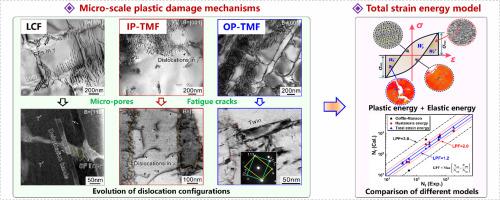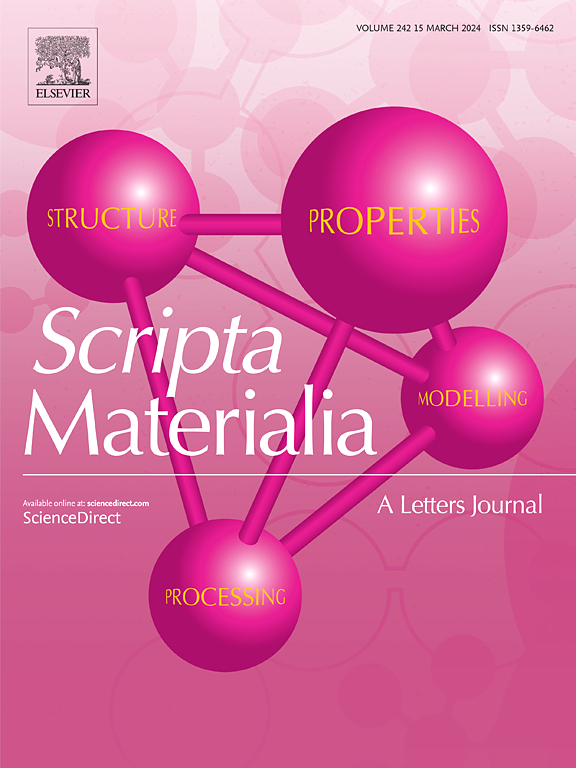第四代单晶高温合金热-机械疲劳微尺度局部损伤机理及寿命预测方法
IF 5.6
2区 材料科学
Q2 MATERIALS SCIENCE, MULTIDISCIPLINARY
引用次数: 0
摘要
单晶涡轮叶片在使用过程中,启停阶段不断变化的温度和应力不可避免地会以低周疲劳(LCF)和热机械疲劳(TMF)的形式对SX高温合金造成致命的损伤。研究了高温循环变形过程中由微孔和裂纹尖端引起的微尺度局部损伤。通过过量的超位错(LCF和同相TMF)和孪晶/层错(LCF和异相TMF)剪切,局部微缺陷的引入显著影响了疲劳寿命,有利于局部γ′降解。此外,还建立了宏观/微观尺度损伤机制与不同应变能分量之间的关系。基于将迟滞能补充优化为总应变能的方法,实现了第四代SX高温合金系统的高精度疲劳寿命预测。这些成果为新型高温合金材料的开发和先进航空发动机的安全运行做出了贡献。本文章由计算机程序翻译,如有差异,请以英文原文为准。

Micro-scale local damage mechanisms and life prediction method of the fourth-generation single crystal superalloy under thermal-mechanical fatigue
During the in-service of single crystal (SX) turbine blades, the ever-changing temperature and stress at starting-up/shutting-down stages would inevitably cause fatal damages to SX superalloys by means of low-cycle fatigue (LCF) and thermal-mechanical fatigue (TMF). In this work, the micro-scale local damage originated from micro-pores and crack tips during high-temperature cyclic deformation was disclosed. The introduction of local micro-defects significantly affected fatigue life and favorably facilitated local γ′-degradation, by means of excessive superdislocations (LCF and in-phase TMF) and twinning/stacking faults (LCF and out-of-phase TMF) shearing. Furthermore, relationships between both the macroscopic/micro-scale damage mechanisms and different strain energy components have been subsequently established. Accordingly, the high-accuracy fatigue life prediction has been achieved in fourth -generation SX superalloy system, based on the method of supplement and optimization of the hysteresis energy into total strain energy. These achievements contribute to the development of novel superalloy materials and safe operation of advanced aero-engines.
求助全文
通过发布文献求助,成功后即可免费获取论文全文。
去求助
来源期刊

Scripta Materialia
工程技术-材料科学:综合
CiteScore
11.40
自引率
5.00%
发文量
581
审稿时长
34 days
期刊介绍:
Scripta Materialia is a LETTERS journal of Acta Materialia, providing a forum for the rapid publication of short communications on the relationship between the structure and the properties of inorganic materials. The emphasis is on originality rather than incremental research. Short reports on the development of materials with novel or substantially improved properties are also welcomed. Emphasis is on either the functional or mechanical behavior of metals, ceramics and semiconductors at all length scales.
 求助内容:
求助内容: 应助结果提醒方式:
应助结果提醒方式:


